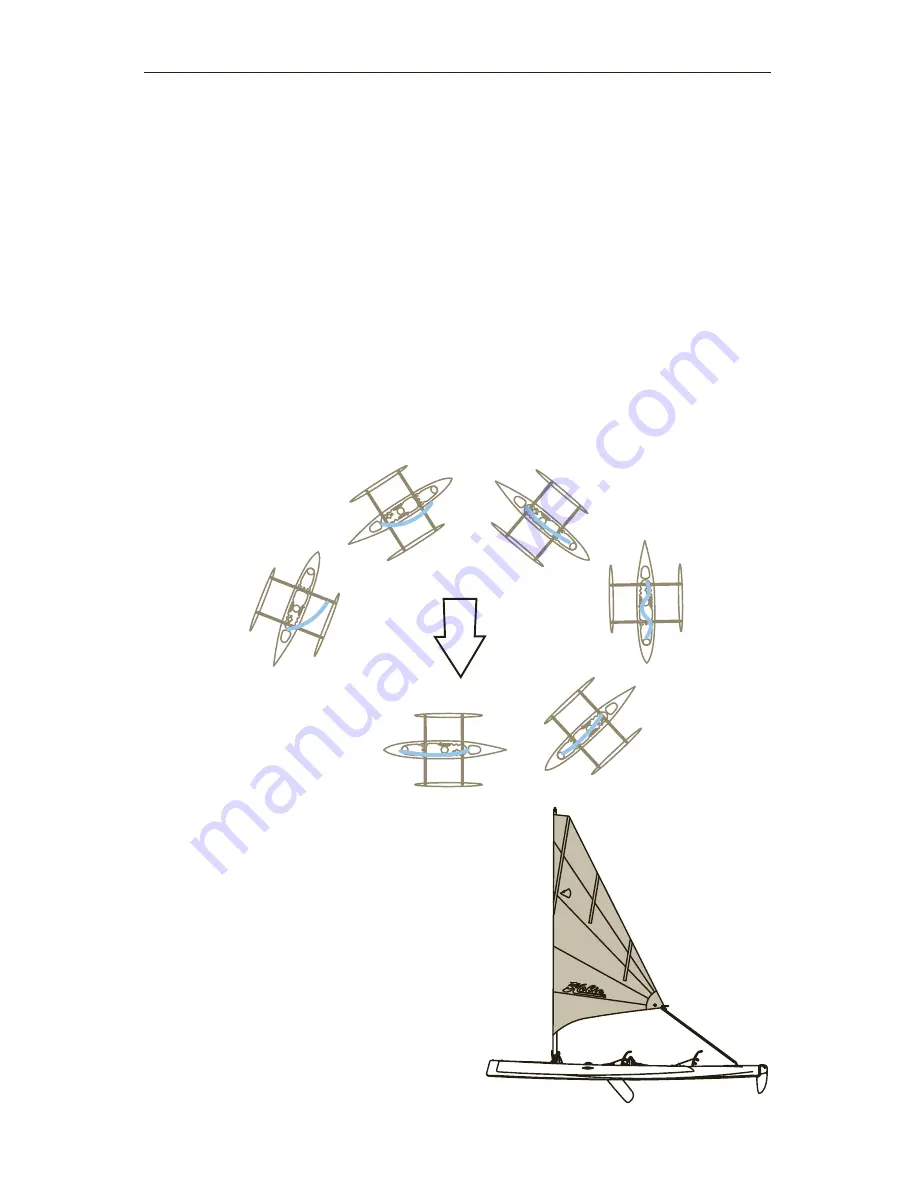
48 | Sailing Basics
Reefing for More Performance
When sailing in high wind conditions,
you may find that the bow of the amas
start to submerge and pierce the water.
To get some of the load off of the amas,
reef the sail down as shown on page
30. By eliminating the drag from the
submerged amas, you will improve the
performance of the Island in these high
wind conditions.
sailing terms, “falling off”) to the opposite point of sail rather than into the wind
as when tacking. Care must be taken when attempting a jibe in high winds as the
boat will be at full power and you cannot easily de-power it without turning back
into the wind.
To start a jibe, turn the boat away from the wind and let the sail out slowly. Keep
the turn going at a steady rate and begin pulling the sail back in as the boat nears
the straight downwind direction. This will keep the sail from slamming all the
way across when the sail fills from the opposite side. As the wind fills the sail
from the opposite side and swings across the boat, duck below the sail to avoid
being hit. Attempt to control the speed of the sail while it crosses the deck by
maintaining some tension on the mainsheet, then ease the mainsheet out quickly
as the boat turns past the downwind direction into the new point of sail. Trim the
sail correctly for the desired point of sail.
WIND
COMING
ABOUT
FALLING
OFF
HEADING UP
Содержание Mirage Tandem Island
Страница 1: ...Hobie Mirage Tandem Island Manual ...
Страница 2: ......
Страница 4: ......
Страница 51: ......



















